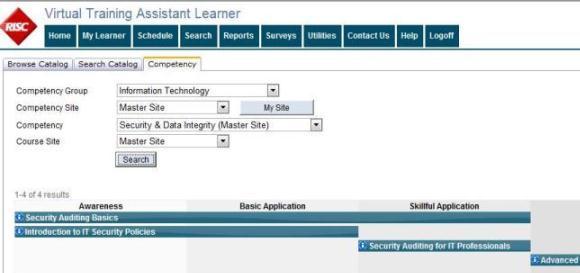Competency Management in VTA 7.0 – An Overview
Moving from training-centered to competency-centered talent management can be an intimidating task. It is a task that can contribute greatly to the bottom line by focusing on building the skills and abilities of learners to support strategic business goals.
Where traditional training programs consider the learning needs of students and manage training events to satisfy these requirements, competency based talent management shifts the focus of training event to a process where small, targeted developmental interventions – which may include training – are assigned to individuals as part of an on-going assessment process. This process develops the employee from their first day of employment through retirement. Interventions are designed to nurture individual strengths and affect specific behaviors and to help learners master skills versus ‘checking the box’ to show training has been accomplished.
Competency-based talent management requires a partnership between supervisors and students where each person takes responsibility for their own development. VTA provides an array of tools designed to help facilitate this partnership, allowing the learner to efficiently focus their time on developmental activities while providing the organization with a consistently evaluated inventory of skills.
For Organizations – Organizations can define competencies and competency profiles with common performance indicators for assignment across the organization to document employee skills for workforce deployment, succession planning and recruiting and compensation.
For Supervisors – Supervisors can assess their employees against defined performance indicators to ensure consistent evaluation across the organization. Supervisors can also develop individual development plans for students to help them close competency gaps.
Personal Development plans may include training events as well, developmental tasks and resource assignments, each with target dates viewable by both the supervisor and the learner.
For Named Assessors – Performance assessment on certain competencies may be restricted to named assessors that are specialized in this area. Named assessors may assess students from multiple work areas or locations. VTA makes it easy for Named Assessors to see and assess just the students he or she needs to assess, while restricting the Named Assessor from seeing the general competency assessments for the target employees.
For Students – VTA makes it easy for students to self-assess on competencies, review their official assessments and update their personal development plans as they build their skills.
VTA Learner makes it easy for both students and supervisors to find courses and resources that can be used to build competency.
Interested in learning more? Watch this continuing series of articles diving deeper into VTA 7.0’s competency management functions or contact RISC at risc@risc-inc.com.


